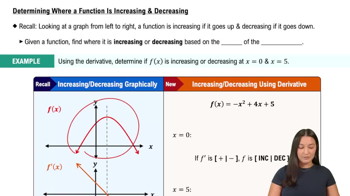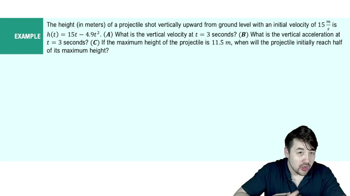Theory and Examples
Maximum height of a vertically moving body The height of a body moving vertically is given by s = −12gt² + υ₀t + s₀, g > 0, with s in meters and t in seconds. Find the body’s maximum height.
 Verified step by step guidance
Verified step by step guidance Verified video answer for a similar problem:
Verified video answer for a similar problem:



 7:32m
7:32mMaster Determining Where a Function is Increasing & Decreasing with a bite sized video explanation from Patrick
Start learning